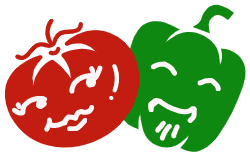Is the wax fruit really that realistic looking or is the real fruit just looking more like wax?
Foods in grocery stores are products designed to catch our attention and income. They are a means to an end and that end is profit. For a great many of us, supermarkets are the only source of food, so what they sell is what we get. Because there is a demand to stock certain foods at all times, much of it cannot be produced locally. Storing and shipping food over long distances costs even more money, and keeping food looking fresh during transport has become the focus.
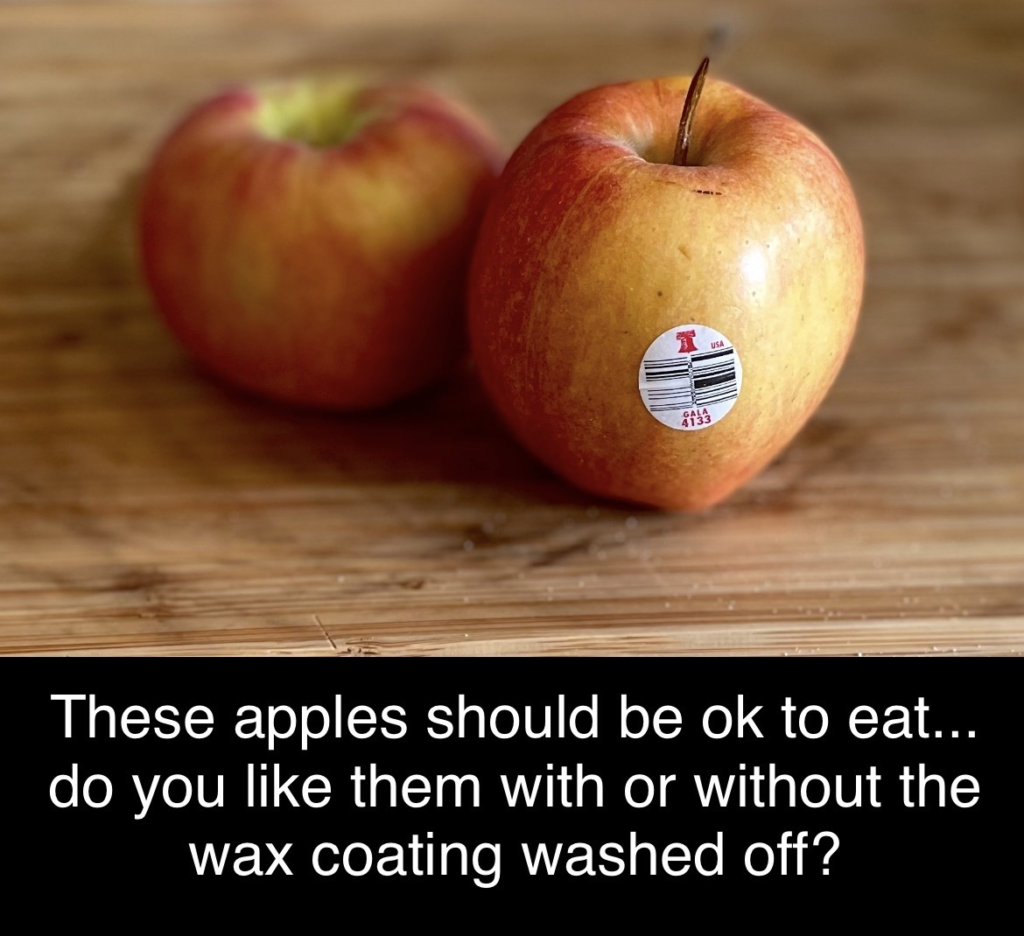
Supermarkets offer produce that is flawless, but devoid of nutrients and nearly tasteless.
Thinking this bland fare is normal for fresh fruits and vegetables, we might avoid them altogether. Much safer is the predictability of frozen, boxed and canned foods.
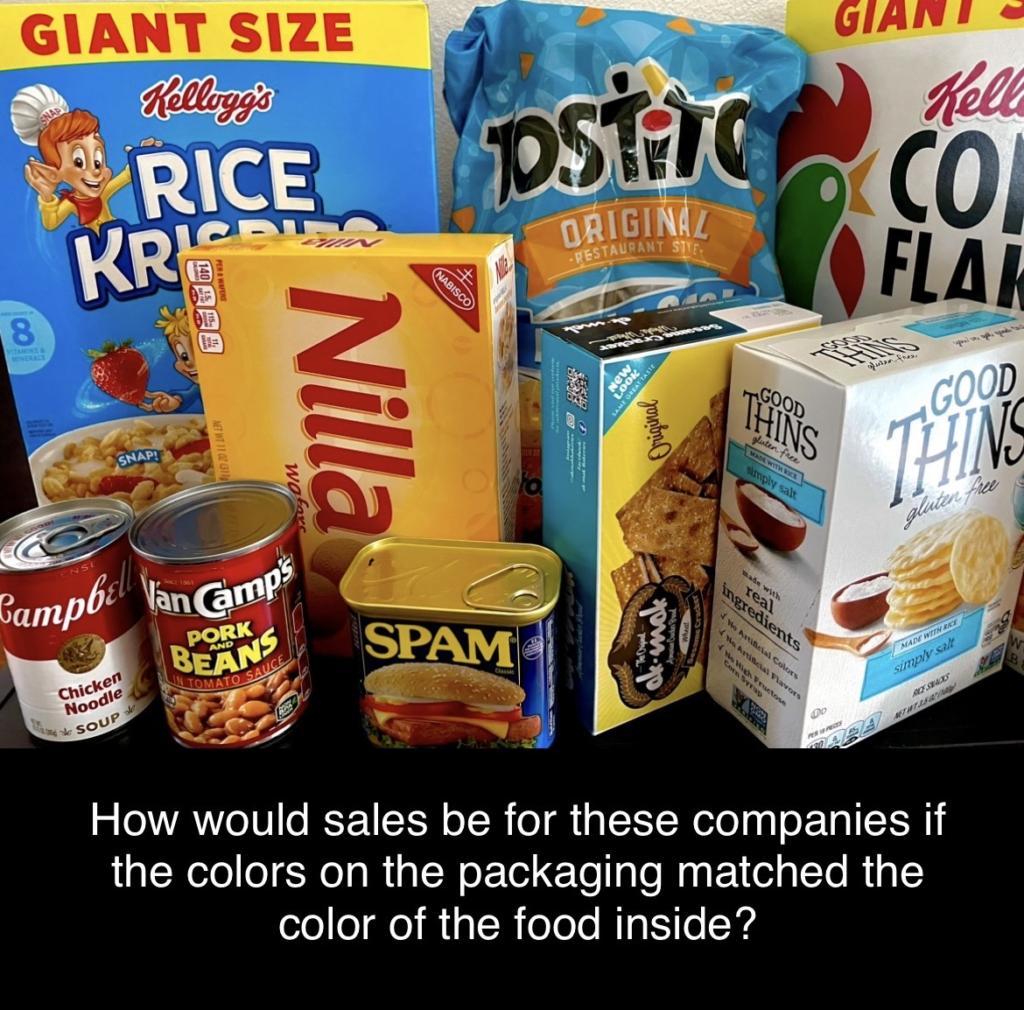
This food pretends to provide the nutrition we need. But if this is all you know, would you want or even recognize the real thing?
We get so used to processed food that is already chopped, peeled, and cooked. We buy food that resembles plastic food in a child’s play kitchen. Like these toys, processed food is also designed for entertainment. Bright colors, artificial shapes, and easy-to-manage textures offer an eating experience free from effort, suggesting a wide variety of choices when almost all processed food is made of the same ingredients.
Perhaps you recall the scene from The Devil Wears Prada where Meryl Streep’s character blithely explains how the fashion industry chooses what we wear “from a pile of stuff”? The food industry is no different, and that pile of stuff isn’t as varied as you think.
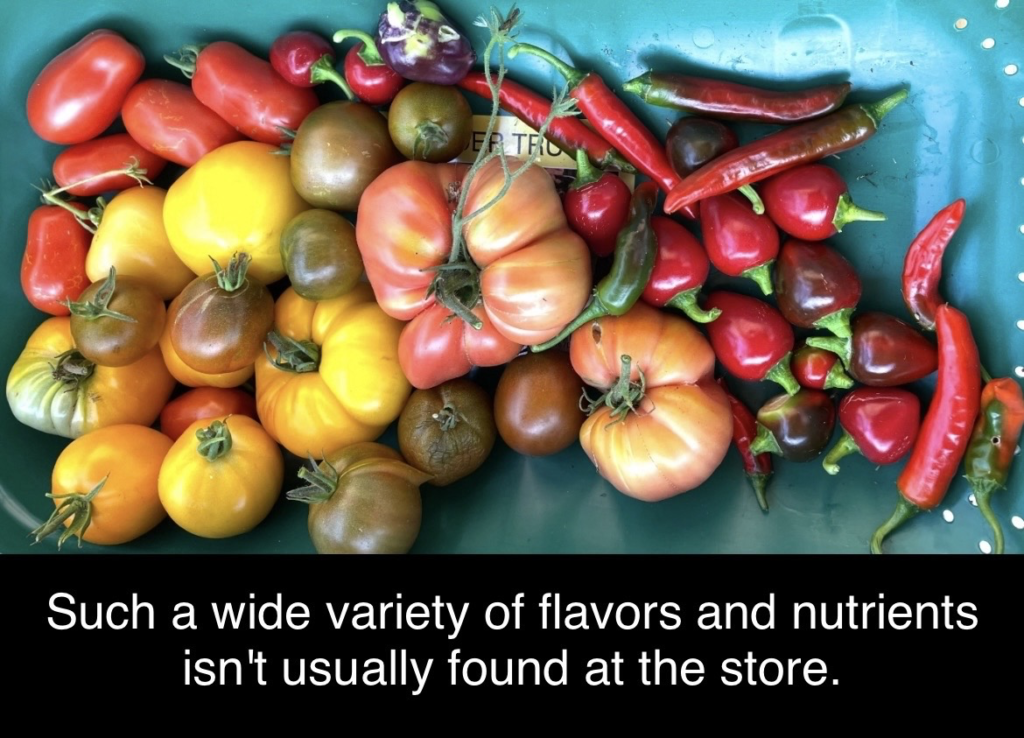
There was a TikTok video going around of a woman who was buying lemons at the store despite having a lemon tree full of ripe lemons right outside her home. She didn’t know you could pick the lemons and then they would be safe and ready to use. If you don’t know, you don’t know! The first time I picked a cucumber I stabbed my hand all over and was shocked to discover it was covered in spikes! I didn’t know if it was ready to eat or not and had to look it up.
This dissonance is the biggest barrier to growing our own food instead of buying it at a supermarket.
If you have no background experience of a plant food in it’s natural state you have no concept of how it goes from the dirt to your plate. It’s like eating food from an alien world.
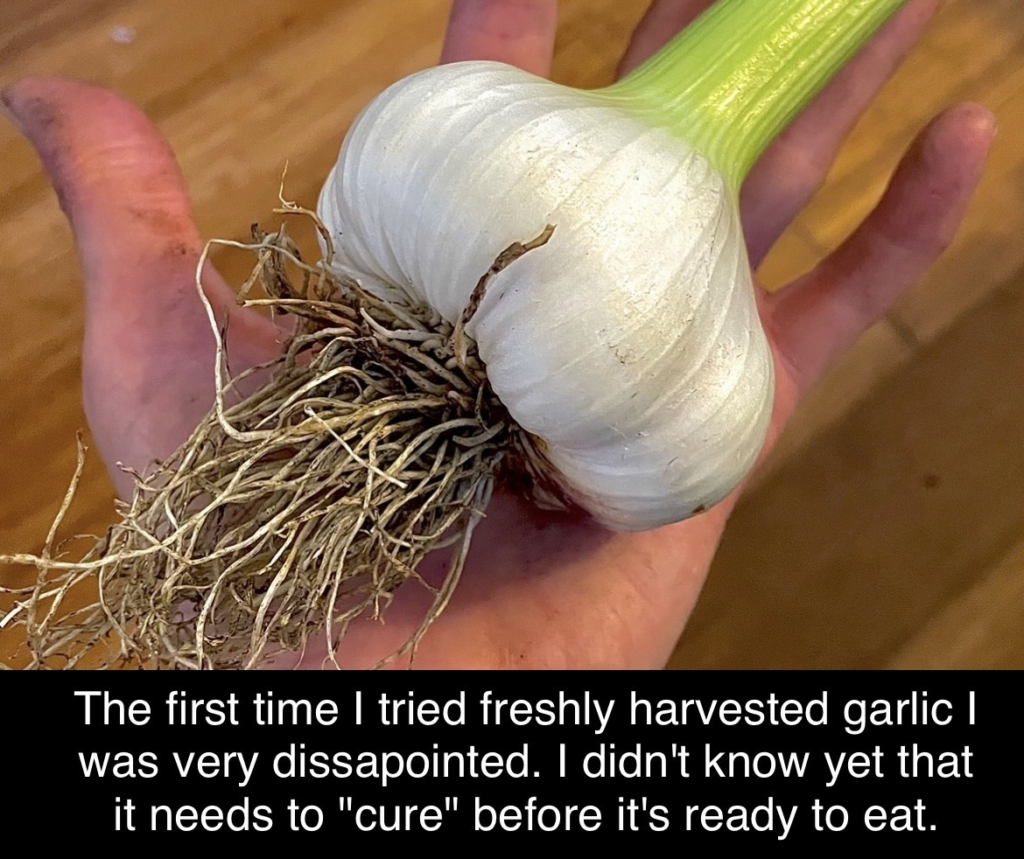
Now, I refuse to buy tomatoes at the store. I just can’t do it anymore. I’ll wait months for tomato season to happen and enjoy the two months out of the year that I get fresh tomato slices on my burger that don’t taste like soggy paper mâché. Prior to gardening, not eating tomatoes on a regular basis was unthinkable.
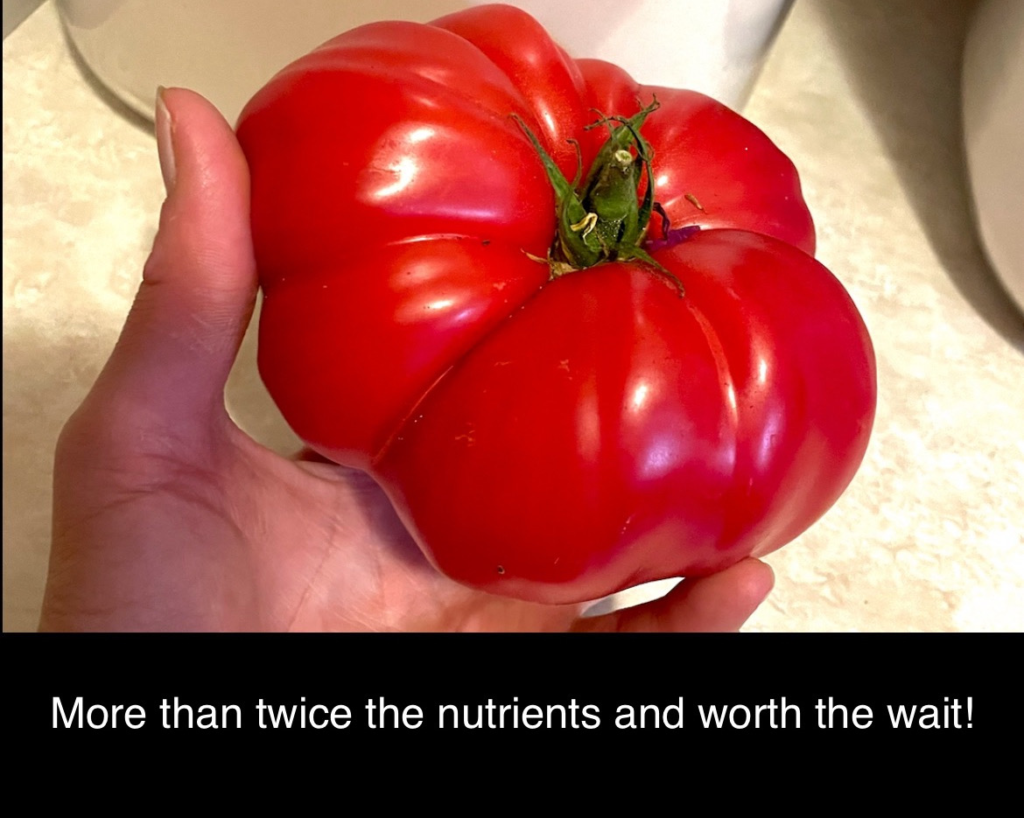
If I was living without ground to plant in, I would overcome incredible odds to make sure I was growing at least some of my food no matter what. Even when living in an apartment I had herbs growing in containers, because I couldn’t stand paying for a measly bundle of herbs that got picked weeks ago.
Information abounds on how to grow and preserve food in almost any circumstance. We can access teachings distilled from hundreds of cultures over hundreds of years. A growing number of hopeful urban homesteaders are looking with renewed respect towards those who already know how to do this. Instead of depending on faceless corporations to provide our needs, we can start to collaborate and teach each other.
The most powerful way to face the uncertain sustainability of big chain supermarkets is to loosen our dependency on them.
Every day I’m learning new ways to eat out of the yard. I’ll still shop at stores, but should the day come where those shelves are empty I’ll know how to stay well fed.
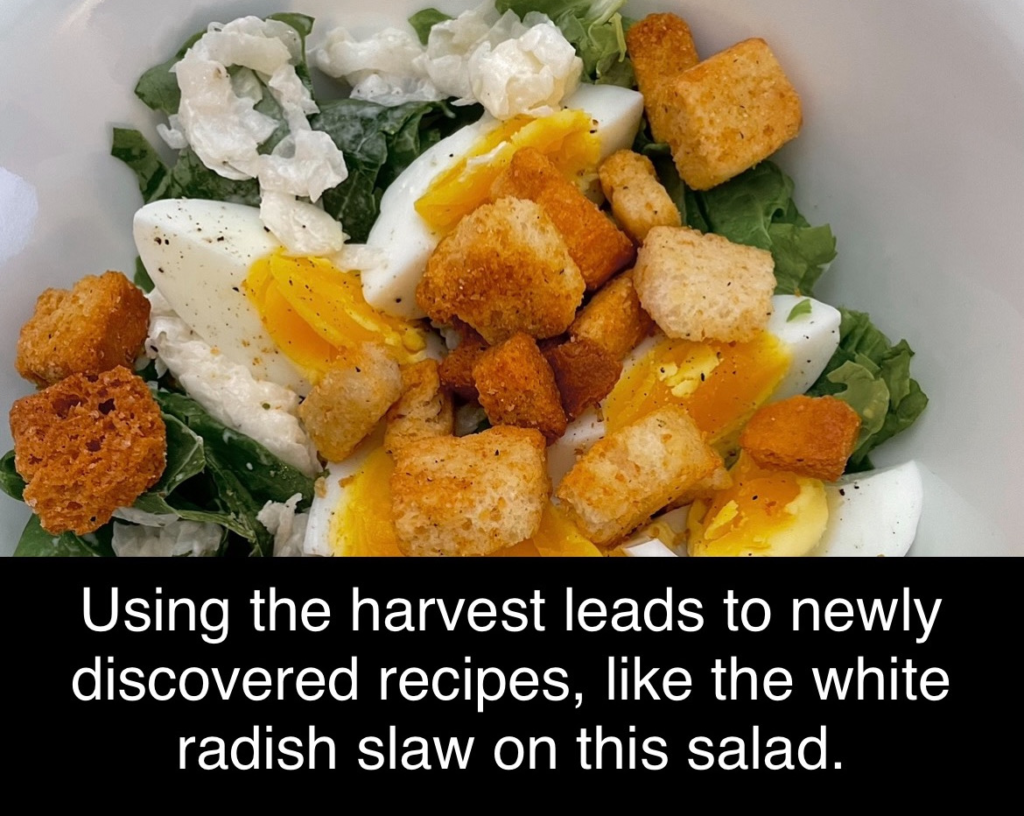
Learn more about the nutrition crisis we are facing:
Join the conversation!
What cooperative local gardening events are happening where you live?
Are you finding ways to grow food without being a land owner?
Have you discovered or been taught ways to stretch the foods that are available to us?
Post in the comments and share!
